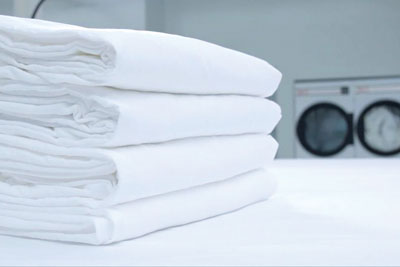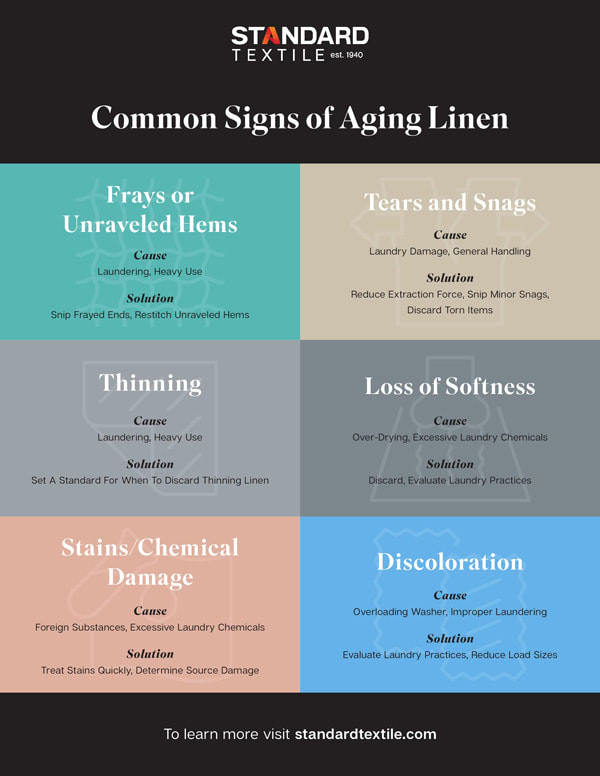What are the dangers of not replacing used linen?
Replacing used linen too late results in a negative guest experience. Bed and bath linen will be touched by your guests for a significant portion of their stay. Because of this, they will also be closely scrutinized. If frayed towels or stained bedding make their way to guest rooms, you might receive complaints or negative online reviews. The cost of negative reviews can be extensive, with a recent article by Customer Alliance stating that hotels can risk losing up to 22% of bookings due to negative reviews. For these reasons, perhaps more than any other room amenity, overused linen is a liability to your guest experience.
Is it possible to replace used linen too soon?
Our outside textile consultants visit hotel laundries nearly every day. One of the most surprising discoveries they have made is that linen items are often discarded well before the end of their useful life. While you never want to replace used linen too late, it is also possible to discard items too soon. Minor stains, frays, and unraveled hems are often correctable. And even varying levels of whiteness that are obvious in the laundry room are often impossible to see when the product is in the guest room. Knowing which imperfections are acceptable will enable your laundry staff to extend the useful life of your linen and keep your cost per use as low as possible, without affecting your guest experience.
Common signs of aging linen:
Download our quick reference guide or read on to learn some of the most common warning signs of aging linen:
Does your property have a linen policy?
How many snags on a towel are acceptable? When should a discolored piece of linen be replaced? Should you try to repair frays or unraveled hems? Every property will answer these questions differently depending upon their budget and guest expectations. A well-defined linen policy is crucial. It should include:
A well-written linen policy acts as a training guide for your staff and ensures your used linen is discarded at the proper time. Adoption of your linen policy will maximize useful life while also avoiding a negative guest experience caused by unsightly linen. Ultimately, think like a guest
As you consider your linen replacement policy, put yourself in your guests’ shoes. Looking at the towel or sheet in front of you, ask yourself: “Would seeing this linen in my hotel room cause me discomfort? Would I think less of the property?” If your answer is “yes” or even “maybe”, then it is time to say goodbye to that sheet or towel.
There is no one-size-fits-all answer for when to discard used linen. However, by considering your guest expectations, following your linen policy, and carefully watching for the warning signs of aging linen you can create your own unique answer to this complex question. What to do with old linen?
Now that you’ve decided when to discard used linen, what do you do when it is finally time to say goodbye? If you are simply tossing your old linen products into the trash, you are missing out on a great opportunity to donate to a local charity or nonprofit organization who can reuse these products in the community. Research what options exist in your community and take a sustainable approach to your used linen.
Bonus: Tips for extending the life of your linen
We sat down with our very own laundry experts to discuss how to extend the life of your hotel linen. Here were their top tips:
IMPORTANT: Some linen products are delivered with “sew offs” or fly yarns that stick out of the hem. This is a result of manufacturing and will shrink in after a few washes. We do not recommend trimming these sew offs to avoid product damage. Disclaimer
This article was originally published by Standard Textile.
1 Comment
Sure! Here's a possible comment:
Reply
Your comment will be posted after it is approved.
Leave a Reply. |
Submit Content to WHLA!All WHLA members are welcome to submit news and educational content for our publications.
View our Content Submission Guidelines. Archives
July 2024
Categories
All
|





 RSS Feed
RSS Feed